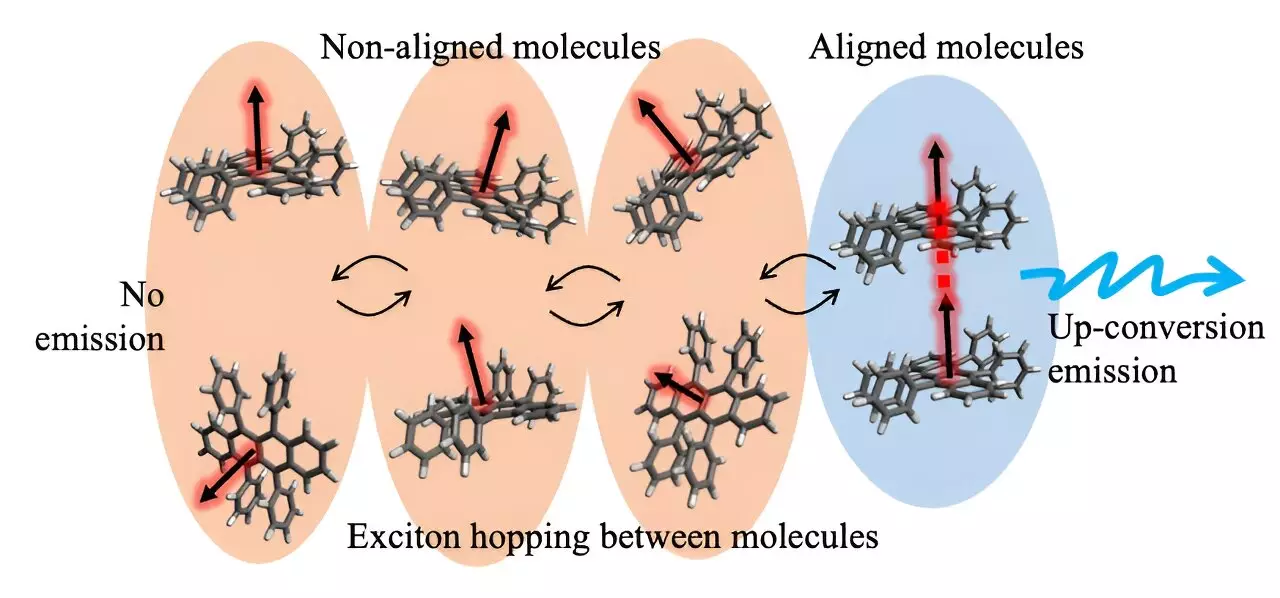Photon up-conversion, the process of combining two low-energy photons to create a single high-energy photon, holds immense potential for various applications such as more efficient PV cells, OLED displays, and even anti-cancer therapies. The ability for energy to transition smoothly between molecules in a solid is crucial for this process to occur efficiently. However, the speed at which this energy transfer takes place plays a significant role in determining the overall success of photon up-conversion.
Researchers at Kobe University, led by photoscientist Kobori Yasuhiro, delved into the world of electron spin states to shed light on the mechanism behind efficient photon up-conversion. By studying the movement and interaction of excited states within solid-state materials, Yasuhiro and his team were able to gain valuable insights into the alignment of electron spin states required for effective energy transfer between molecules.
The Role of Triplet Excitons in Photon Up-Conversion
One of the critical components in the photon up-conversion process is the generation and transfer of triplet excitons. These excitons play a pivotal role in facilitating the conversion of energy into a different excited state that eventually leads to the emission of a high-energy photon. To achieve a high likelihood of successful energy transfer, the triplet excitons must be able to move freely between molecules of diverse orientations while allowing enough time for different excited states to interconvert.
The groundbreaking results of the study, recently published in The Journal of Physical Chemistry Letters, provide a roadmap for designing highly efficient photon up-conversion materials based on a deep understanding of the underlying microscopic mechanisms. The discovery of the importance of electron spin states in the up-conversion process marks a significant milestone in the field, opening up new possibilities for the development of advanced solar cells, cancer therapies, and diagnostic technologies that harness the power of near-infrared light.
Yasuhiro envisions a future where this newfound knowledge can be harnessed to address pressing global challenges, particularly in the realm of sustainable energy production and healthcare. By leveraging the insights gained from their research, the potential applications of photon up-conversion technology extend far beyond the confines of traditional scientific disciplines, offering a beacon of hope for a brighter and more sustainable tomorrow.
The research conducted by Kobe University researchers not only provides a crucial insight into the intricate workings of photon up-conversion but also paves the way for transformative advancements in various industries. By unraveling the mysteries of electron spin states and energy transfer mechanisms, the team has set the stage for innovative breakthroughs that have the potential to revolutionize the way we harness and utilize light energy for the betterment of society.



Leave a Reply